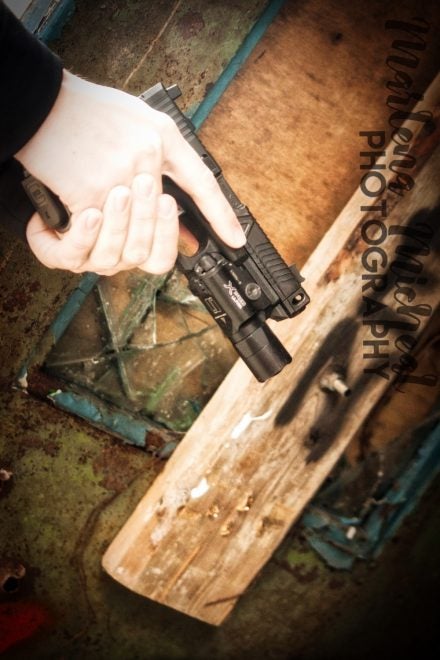Illumination tools are an essential part of an every day carry (EDC) setup. Two primary illumination sources are used, both weapon mounted lights and handheld lights. Both have their pros and cons but compliment each-other well. Once you carry a light you will be surprised how often you use it even during the day. It is essential that you practice with your lights and get quality training in order to receive the maximum benefit from a quality illumination tool. Much like any other EDC tool, illumination tools can be swapped and changed to properly meet the user’s daily needs.
EDC Illumination: All the Lumens
In the early days of tactical lights 60 lumens seemed blinding. Today we have handheld lights capable of 1500 lumens. How many is enough? Much of it depends on the application and the environment. Lumens are quickly eaten by particulate matter in the air and bringing more lumens to the fight allows you to overpower your opponents lights and see greater distances.
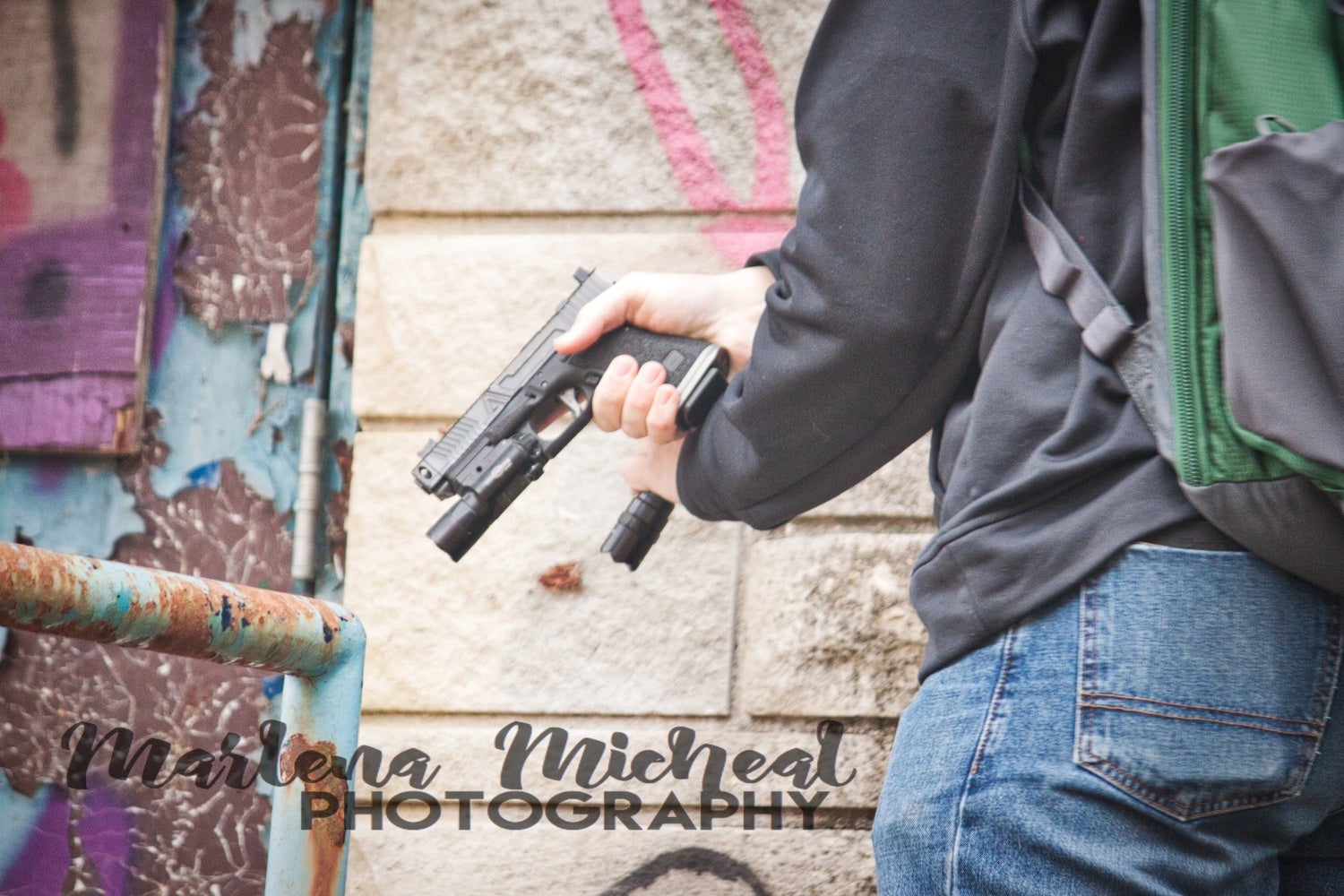
Handheld and weapon mounted lights are important for EDC, providing you with more options.
Weapon Mounted Light
A weapon mounted light gives the most contact with the firearm and results in better grip. With handheld lights a hand must be designated to light manipulation while the fire control hand is left alone to operate the firearm. The extra contact provided by two hands on the firearm is beneficial under recoil and greatly improves followup shots. Focusing a high powered beam on the threats face not only helps reduce their visual acuity, but also focuses the firearm on the head for quicker incapacitation. For single-handed manipulation a weapon-mounted light is also a more effective asset in low light conditions. Often the support hand is tied up doing other tasks and a weapon mounted light allows the fire control hand to control both the firearm and the light output.
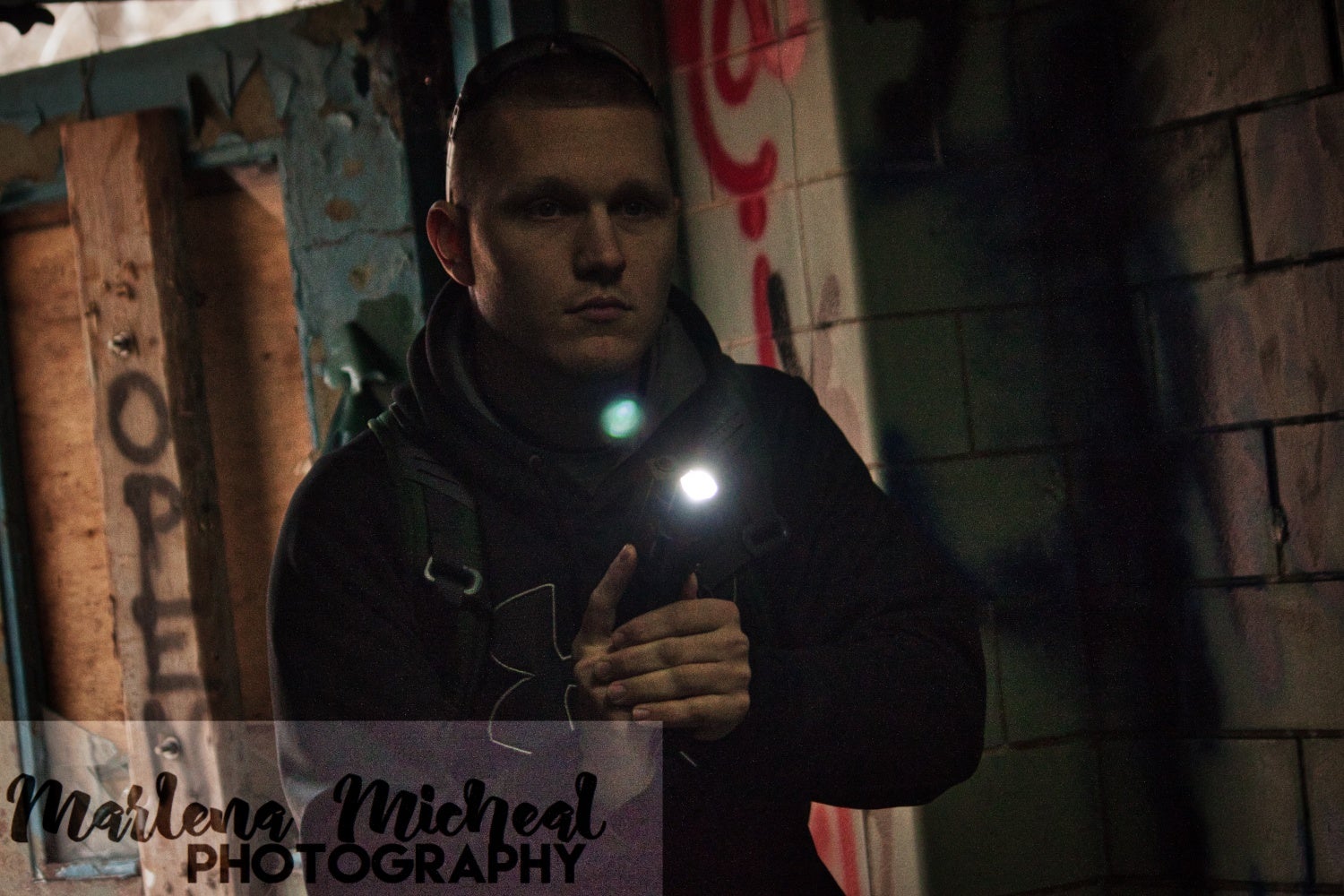
Even during the day, traversing inside structures can block out enough light to need a flashlight. Here is an example of using the X300U for umbrella lighting in a structure.
When a threat has not yet been identified different lighting techniques can be effective. Umbrella lighting can be seen above, where the light is focused on a low ceiling. The light bounces off the ceiling and fills the room making it easier to identify threats instead of simply following the hot spot of the light. Obviously this technique has limitations and is not effective in areas with high ceilings or outdoors.
Contact Shooting
The light also provides standoff so that the slide will not be pushed out of battery when pressing into a threat.
*Note that a Glock 17t simunition pistol was used for the following pictures. The pistol was cleared before photographing started and does not accept live rounds. The blade used for illustration is also a training blade with no live edges. When training with simunitions make sure to wear all proper personal protective equipment (PPE) and follow manufacturer’s instructions.
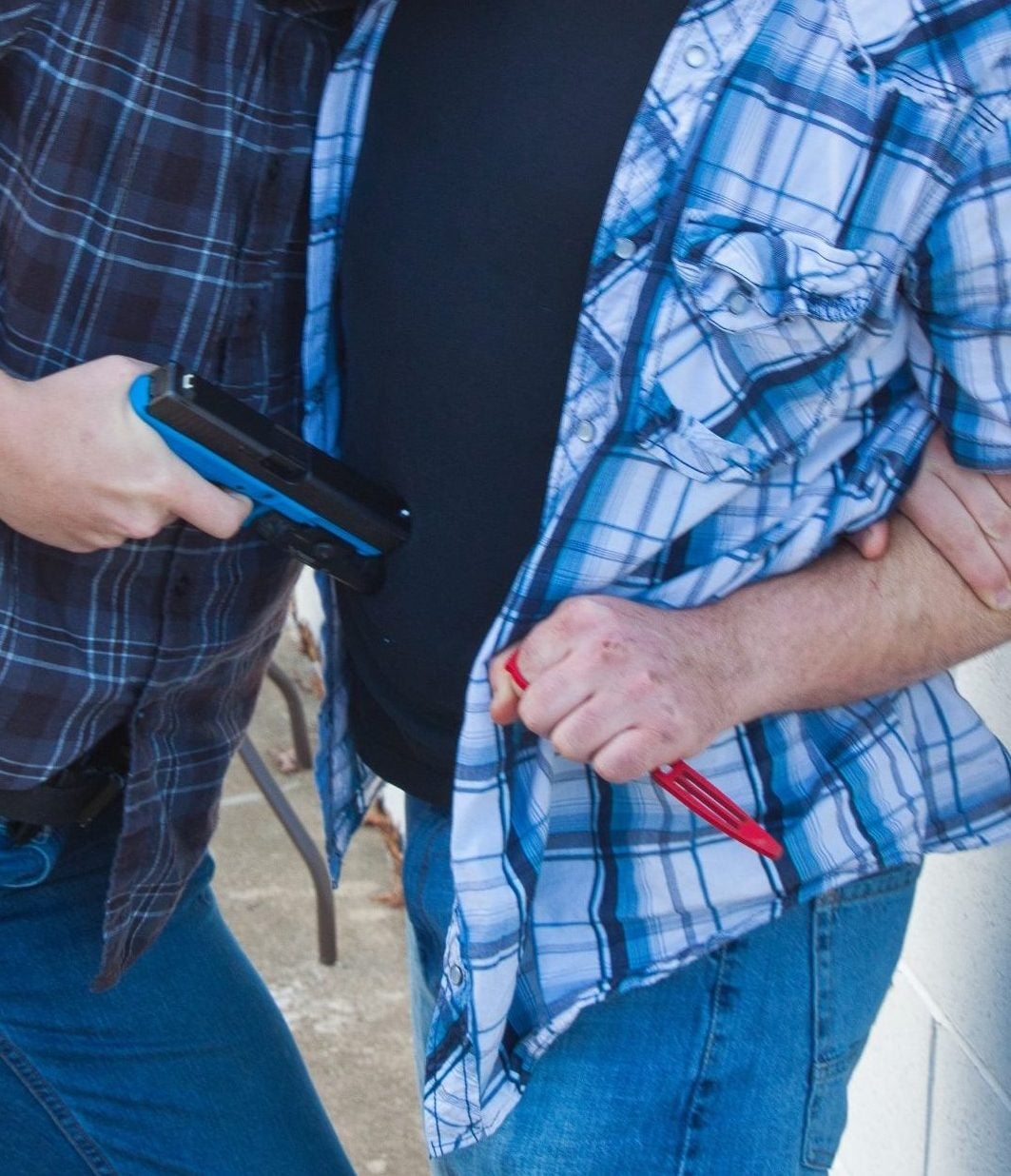
This is an example of the standoff provided by a weapon mounted light during an entangled fight. The slide is able to reciprocate while the bezel of the light makes contact with the threat.
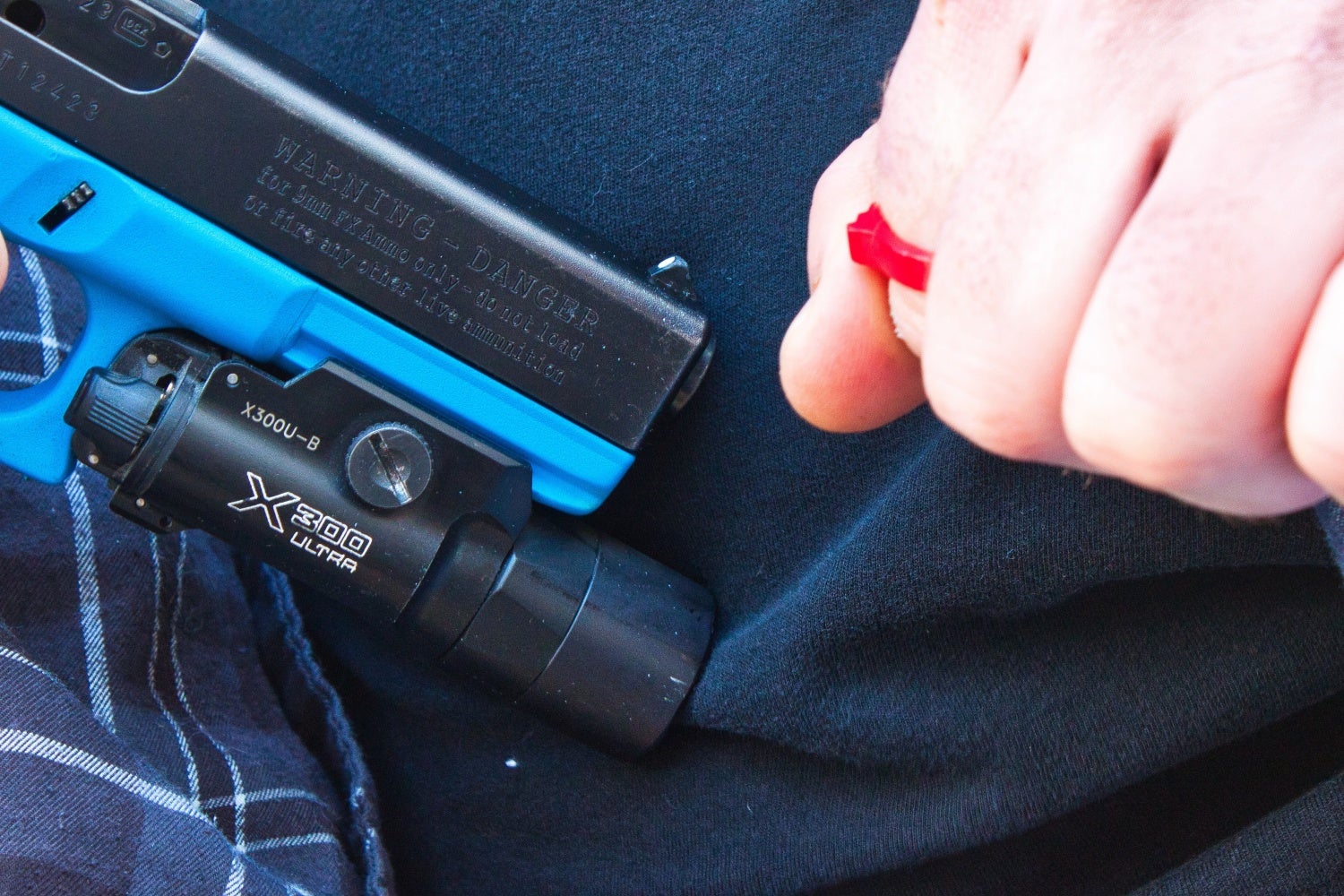
The muzzle is approximately an inch behind the bezel of the flashlight providing standoff for contact shooting.
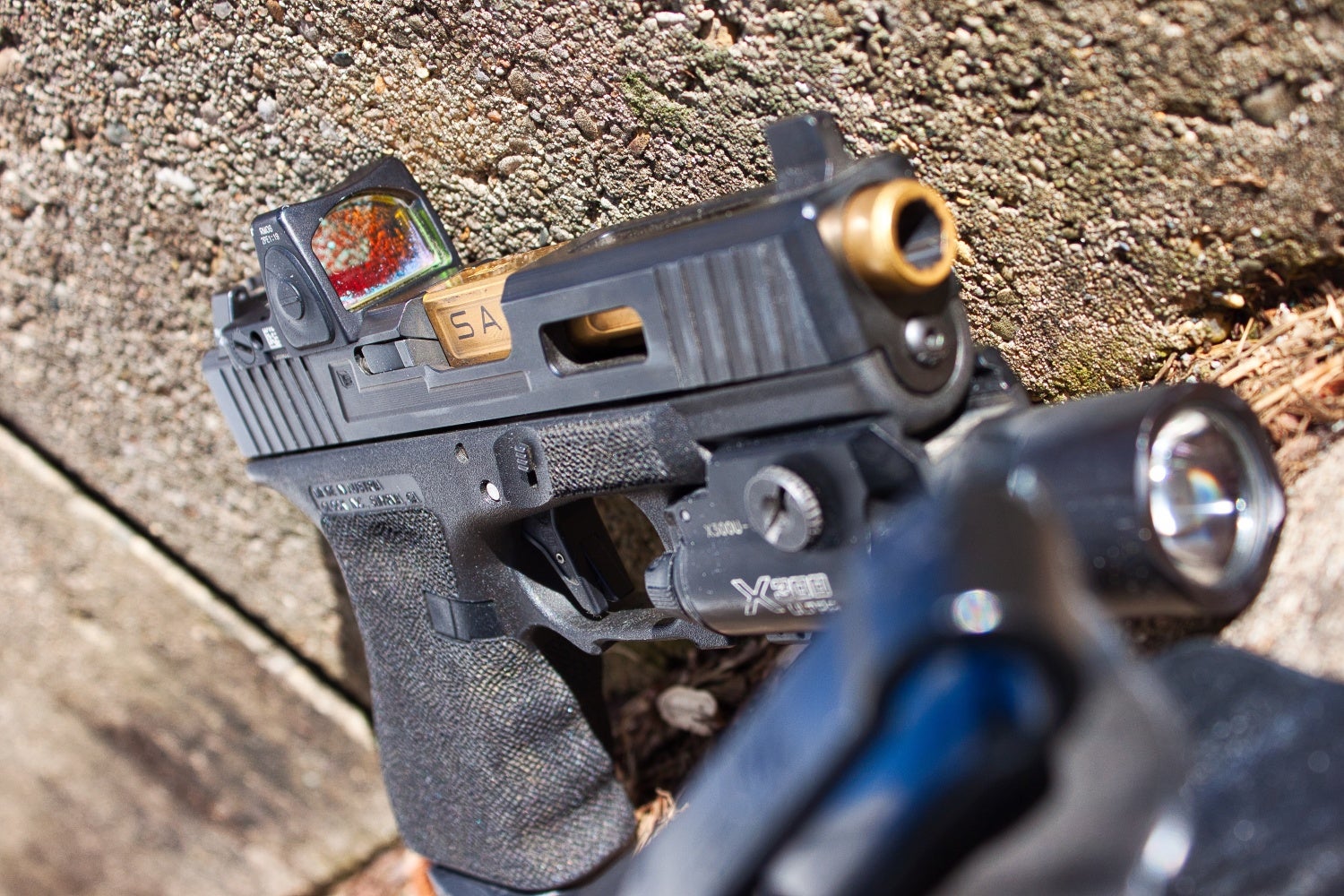
Here it is easy to see the standoff afforded to a Glock 19 by a Surefire X300u.
Handheld Illumination Tools

Here are the Surefire Defender E1D and E2D Ultra flashlights.
The E2D Defender Ultra offers 600 lumens and runs on 2 CR123 batteries. Both come with a strike bezel that offers the user a defensive tool, even in very non-permissive environments where a blade or a gun could not be carried.
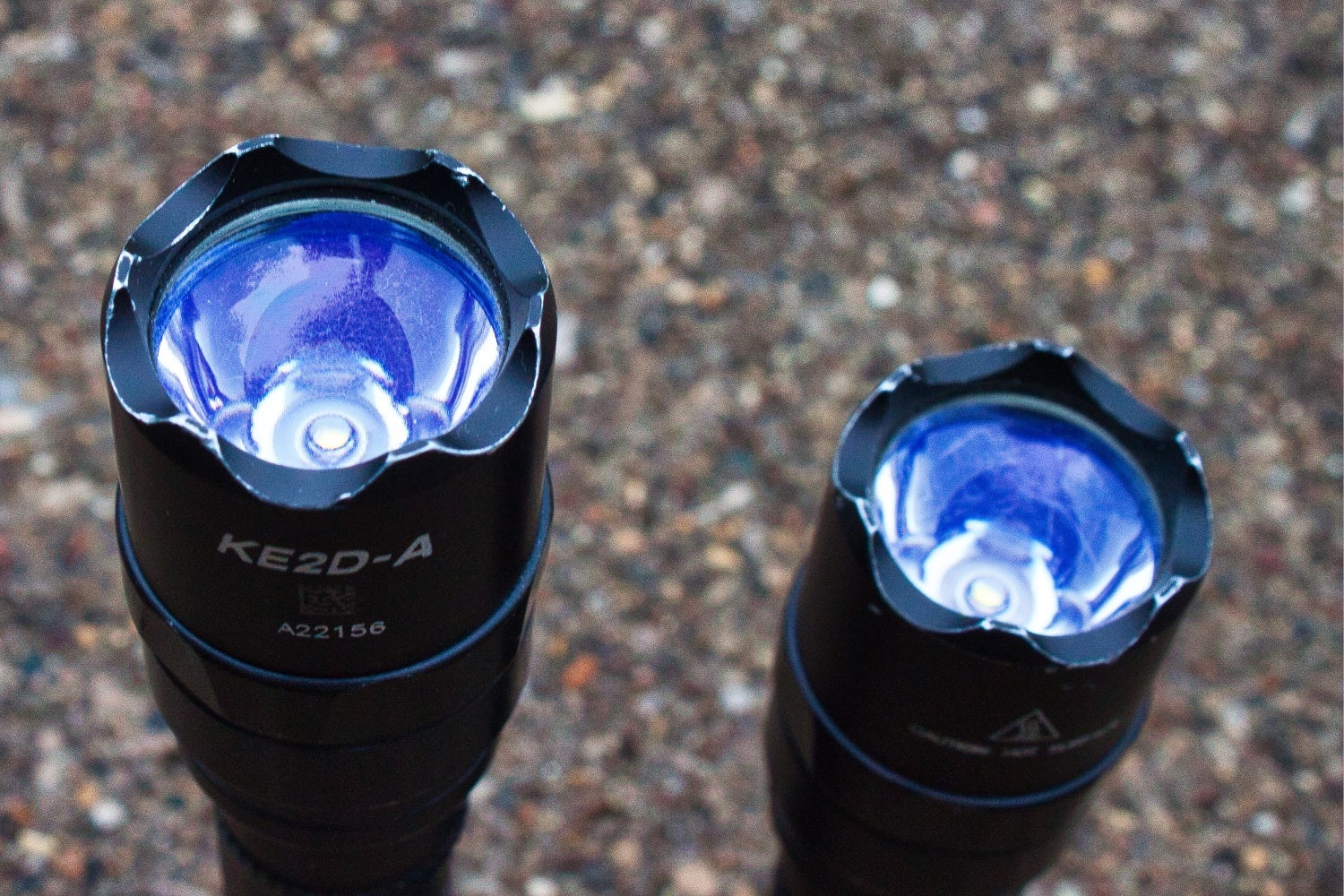
Notice the strike bezels on the two Surefire Defender Series lights.
One nice benefit to these lights is the dual brightness feature. As these are dual purpose lights, the low 15 lumen setting is very effective at reducing battery usage. The tail cap does allow for momentary or constant on in low or high mode. While I would not want multiple output levels in a strictly combat light, it is definitely a nice feature for EDC applications.
EDC ILLUMINATION: Conclusions
A good EDC setup is
constantly evolving and adapting to meet the needs of the user. I would like to upgrade the output of my flashlight.
I like the E2D defender and E1D Defender, but I really want to get a more powerful handheld that also offers good throw at distance. I have tried the Surefire Tactician and while it has a great spill it does not have the distance I am looking for. The new Fury Tactical Dual Fuel offers many great improvements.
It not only offers 900 more lumens than the E2D Defender Ultra, but it also offers the ability to use a rechargeable 18650 battery. You can find more information on Surefire products at
here.
The firearms industry is not cheap and it will take time to acquire a quality EDC setup. Take good training courses and do a lot of research. While it takes little knowledge to turn a flashlight on and off, reading lighting conditions and using an illumination tool to get a tactical advantage takes practice and instruction.
It is better to save a little longer and wait for a quality tool than to buy early and replace soon after. For those with an established EDC setup, what illumination tools are you running and do they meet your needs?







 Your Privacy Choices
Your Privacy Choices
